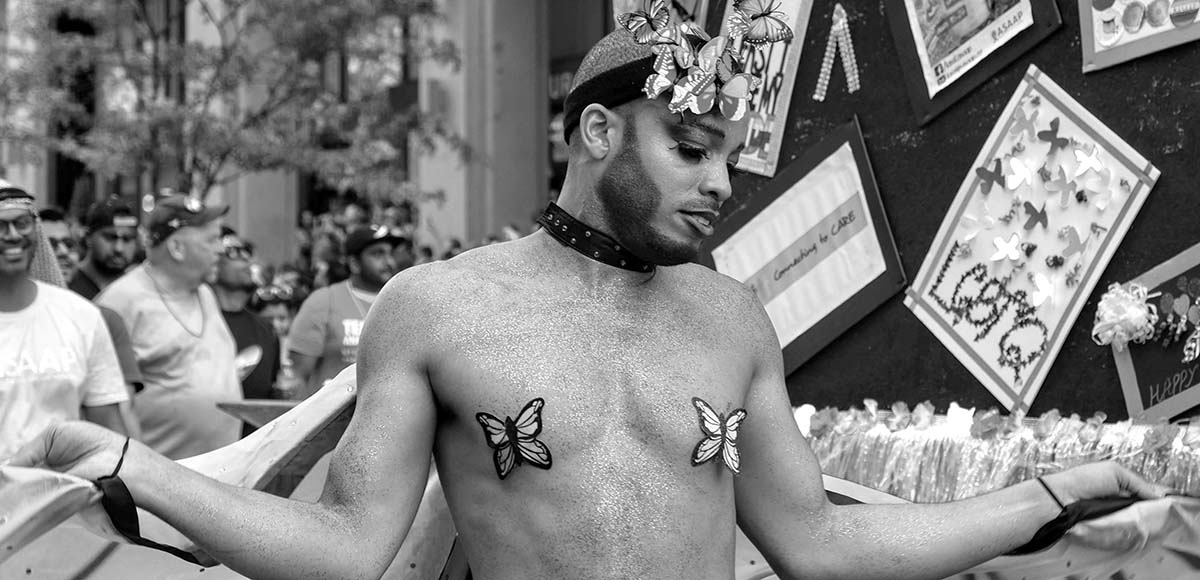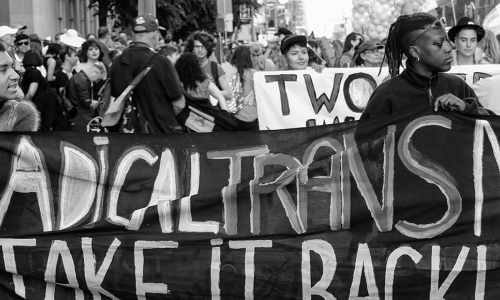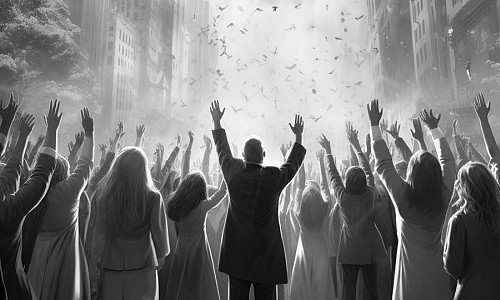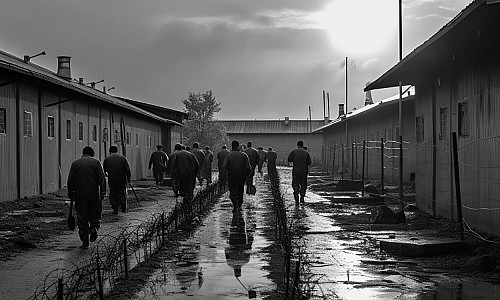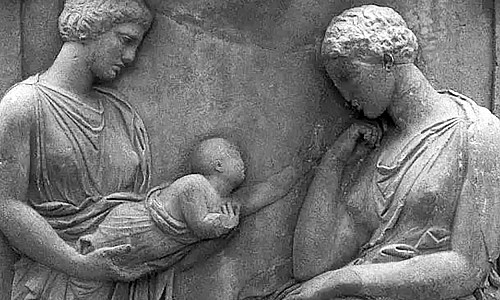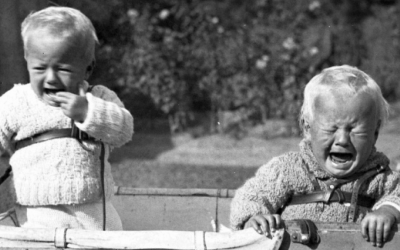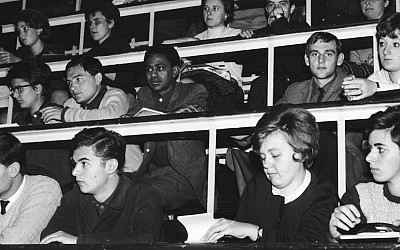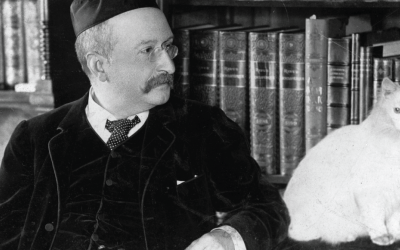In the second part of a new series for young people, Steven Campbell-Harris asks whether public decency laws are discriminatory.
Instagram may seem an unlikely source of philosophical inspiration, yet recently the platform found itself at the centre of a thought-provoking controversy. The question at stake: should women be allowed to expose their nipples on the platform? Currently men can show their nipples and women can’t. Why is this? Can this be justified?
At first glance this debate may not seem a subject for philosophy. We picture philosophers pondering such serious and lofty questions as ‘Can we ever really know anything?’, ‘Do we have free will?’ and ‘What is the meaning of life?’ Talk of nipples feels too particular, and maybe a little improper. However, looked at in another way we might see such a debate as central to philosophy’s mission. Peter Singer, a public philosopher, alive today, wrote:
Philosophy ought to question the basic assumptions of the age. Thinking through, critically and carefully, what most of us take for granted is, I believe, the chief task of philosophy.
The last decade has seen the rise of a movement that fits squarely into the tradition that Singer describes. In 2012, a group of activists formed a global campaign group called ‘Free the Nipple’ to challenge public indecency laws (particularly in the United States) that prevent women from exposing their nipples in public. They argue that such laws discriminate against women (since male nipples are not subject to the same penalties) and encourage fetishization of women’s breasts. Their campaign raises interesting philosophical questions about the purpose of public indecency laws and what it means to discriminate based on sex.
Why do we have laws prohibiting public nudity?
Imagine walking down a busy high street on a summer afternoon. You feel the warmth of the sun on your neck as you pass people idling at shop windows and picking up ice creams for refreshment. Making your way through a crowd you notice that a woman walking towards you is topless. How do you feel? Offended, impressed, surprised, aroused, embarrassed?
Thinking through our reactions, and the reactions of others, is crucial to understanding why we have public indecency laws. When these laws were first formed, they were designed with viewers in mind. Exposed female breasts caused many people to feel uncomfortable, so the argument went, so there should be a penalty for showing them in public.
Some difficult questions follow from this. Since offence varies for different people, many won’t be offended or uncomfortable. Do a certain percentage of the population need to feel offended to justify the laws? How could we measure this?
Another problem comes from considering the effect of the laws. By themselves, they are not neutral judges of what is indecent but contribute to defining it. For example, in 1930s America it was illegal for men to expose their chests in public spaces. It was considered vulgar and obscene. At the time some protested these laws by swimming topless. On one particularly hot August day in 1935, police arrested and fined 42 men on a beach in Atlantic City, according to the New York Times. Eventually the laws changed, and this contributed significantly to people’s attitudes to male toplessness.
‘Free the Nipple’ campaigners often cite this history as a model for social change. The current laws preventing exposure of female nipples are designed to prevent offence, yet the laws also appear to encourage greater offence by enforcing a cultural norm that nipples shouldn’t be exposed. The solution? To change the law to help change the cultural norm.
This argument brings us to a broader question about the purpose of laws. Should our laws seek to change cultural norms or merely affirm them?
Are the laws discriminatory?
Free the Nipple campaigners argue that current public indecency laws are discriminatory because they create a double standard. The argument runs as follows: the laws criminalise a woman exposing the same part of her body as a man. Treating men and women differently for doing the same thing is sex discrimination. Therefore, the laws on indecent exposure are discriminatory. Is this correct?
To counter the argument, we would need to identify an important reason why male and female nipples should be treated differently. However, as the pop singer Miley Cyrus pointed out in an interview with talk show host Jimmy Kimmel, it is odd that the nipple has been a particular focus for scrutiny. ‘The nipple, what you can't show, is what everyone has," she said, "but the jug part that everybody doesn't, you're allowed to show underboob. I've never understood the way it works."
Cyrus cleverly identifies an apparent inconsistency in the laws. Since the current laws say that women can't publicly expose parts of their bodies that men can, the laws presumably need to be based on what is different about men and women's bodies. However, the laws focus not on what is different (the breast itself) but what is similar (the nipple).
To prove just how similar male and female nipples are, some have taken to posting close-up images of both on Instagram to see if they would be censored. Instagram was often unable to tell the difference, incorrectly censoring or refusing to censor. This highlights that the laws as they currently stand are not very practical or coherent.
Given this problem, perhaps we should view the nipple merely as a focal point for the female breast. There are a couple of arguments defenders of public indecency laws might give for treating female breasts differently to male chests.
One argument focuses on sexual arousal. More people are sexually aroused by looking at women’s chests than at men’s chests, they say. Given these differences in the viewers, we can justify different treatment. A similar argument for treating female breasts differently was given in a New Hampshire Supreme Court case in 2016. They heard a case against three women arrested for going topless on a beach that year and ruled against them, stating that female breasts should be considered an 'erogenous zone' (i.e. a part of the body that causes sexual arousal when touched). Since the average male chest is less sensitive, they argued that there is no ‘double standard’ in applying the rule differently.
There are a couple of possible challenges to these arguments. One looks at the assumption of higher sexual arousal - is this just a generally accepted assumption, or do we have some studies to confirm that more people are aroused by the sight of female chests? Secondly, is there some important reason why sexual arousal ought to be restrained in public? People can exercise a capacity for self-control and look away, and many are aroused by many things which are not penalised by law.
Free the Nipple campaigners also argue that the treatment of female breasts as ‘sexual’ is a result of social conditioning. Properly speaking, female breasts are not 'sexual organs' since they don't contribute directly to reproduction. The activist Soraya Chemaly told Mic in May, "women's breasts are not the problem. Sexual objectification is the problem. ... Breasts don't hurt children, breasts feed children, and it's the sexualization of women's bodies that's actually hurting children the most." If female breasts were exposed more often, and there was less stigma around exposure, the lack of a taboo would change the norm.
If you want to explore these ideas further, check out these books:
Invisible Women - by Caroline Criado Perez
Difficult Women - by Helen Lewis
We Should All be Feminists - Chimamanda Ngozi Adichie
"A Question of…” is a new series for young adult readers brought to you by The Philosophy Foundation. Commissioning editors for the series are Emma Worley MBE and Peter Worley.
Steven Campbell-Harris is a Senior Specialist and Trainer with The Philosophy Foundation. In these roles he facilitates philosophical conversations with children of all ages, gives talks on philosophy in schools, and trains philosophy graduates in philosophical enquiry. He has published articles on philosophy and education in Philosophy Now, Teaching Times, and Innovate My School.
You might also like...


